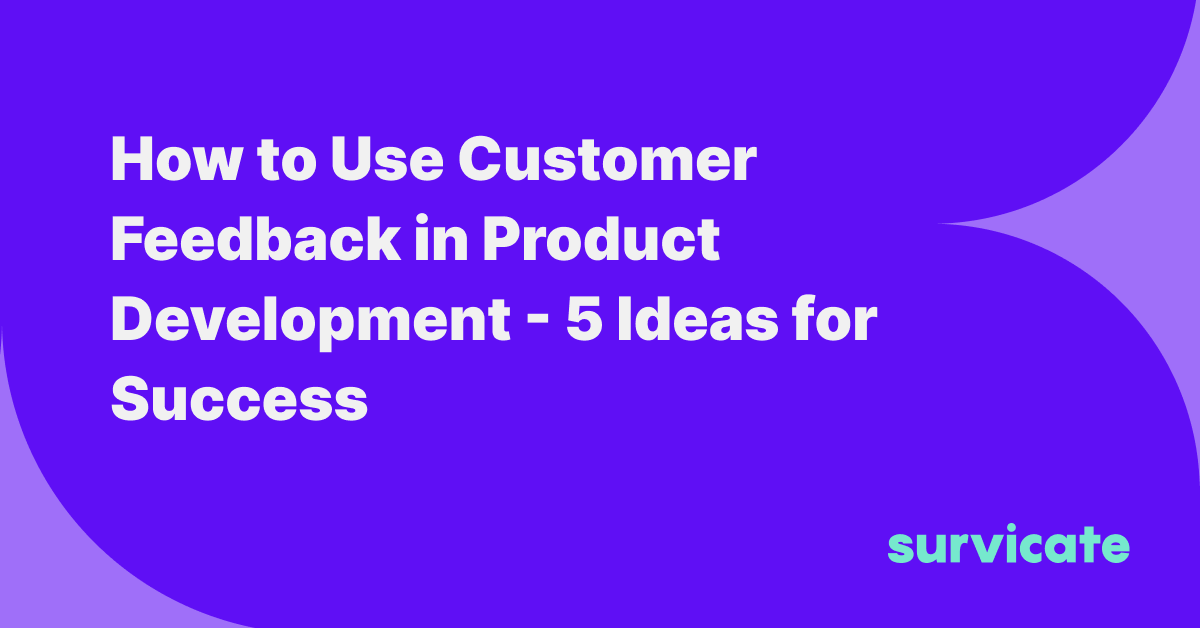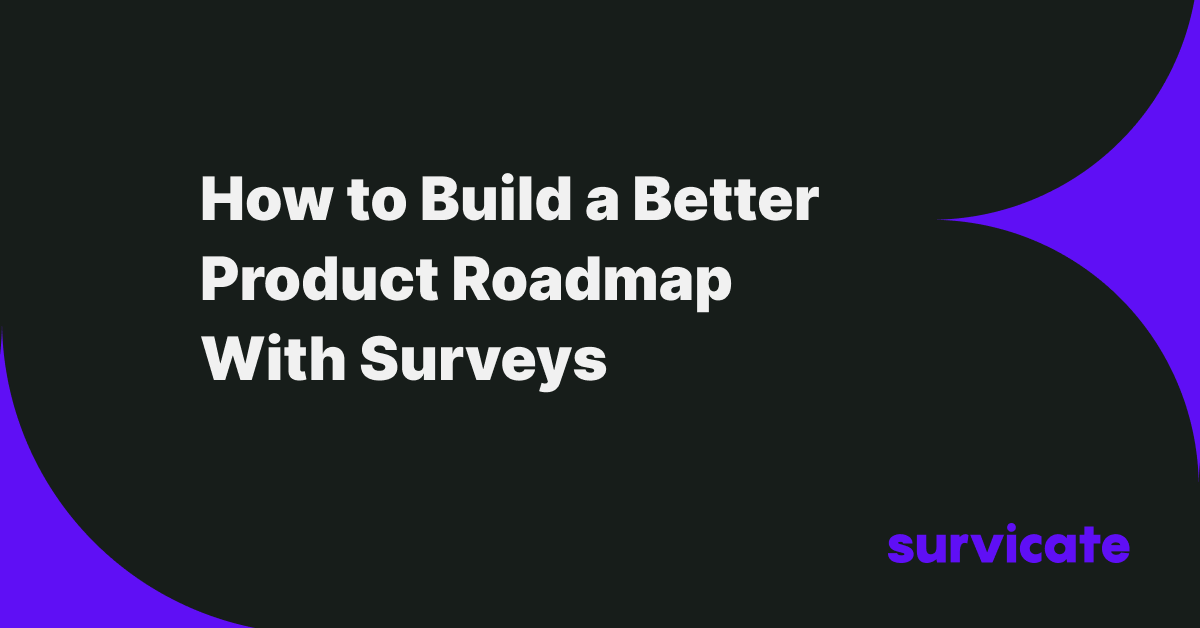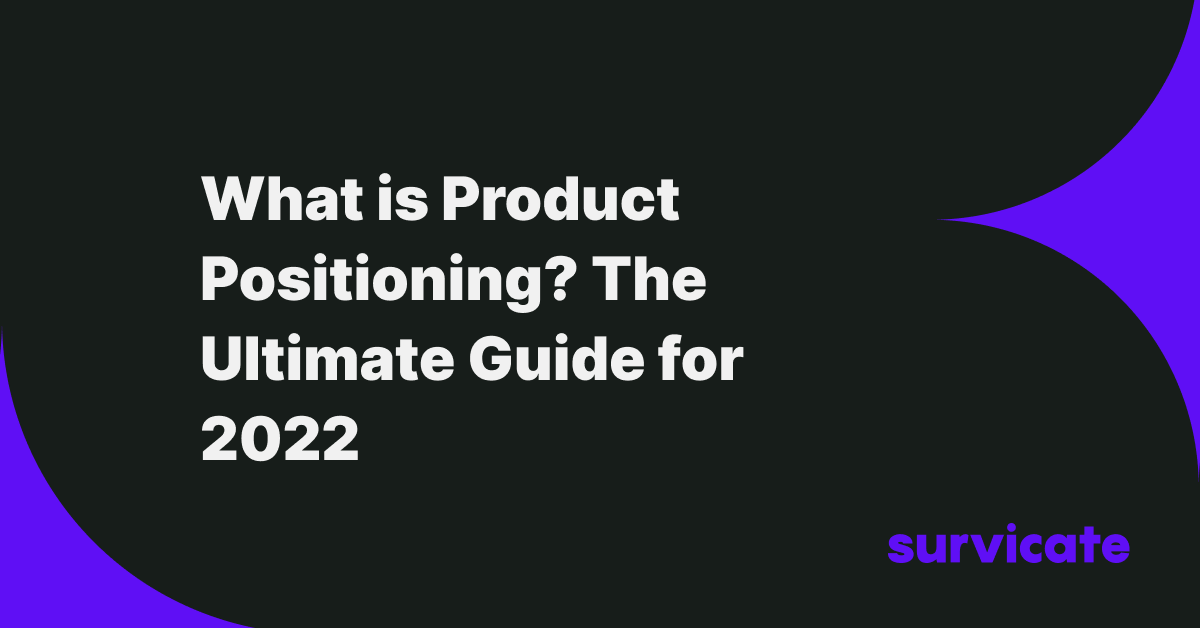Developing a product takes a lot of know-how and deep insights, no matter what industry we’re discussing. The latest craze around SaaS resulted in countless new products being released every day, but very few of them succeeded. The reason - the founders focused on their gut feeling rather than trying to solve an actual pain point for their customers.
The key to solving this problem is customer feedback when developing a new product in the research and development phase. Whether it’s CRM software or a new type of tennis shoes, the same principle applies. Guide new product development ideas with customer feedback, and you’re sure to be successful.
Today, we’ll show you all you need to know about collecting customer feedback in product development.
.webp)
Running website surveys to find out how your customers feel
If there’s a visitor to your website, there are two possibilities. They may already be a customer or be looking to become one. In either case, customer feedback is extremely valuable, and you should use every chance you get. What seems like an innocent visit to their features page could be a huge chance for you to improve your product.
Thanks to Survicate, you can set display rules for website surveys so you can capture the exact customer feedback you want at the exact page you need.
For example, if someone is browsing your features page, there’s a strong chance that they’re interested in your feature set and that it’s a deciding factor before purchasing. You can set up surveys to be displayed just on this page.
In this survey, you can ask customers if they like the current feature set and if there’s something that you could change or fix to make them even happier. The same works for potential customers - you can find out if they’re missing something in your offer that would convince them to pull the trigger.
In short, a website survey is a super easy way to determine if you’re developing the right features or not. Moreover, you can get guidance on new feature requests, bug fixes or just general tips for making your product better inside and out by collecting customer feedback.
Run live chat (Intercom) surveys to get product feedback from engaged customers
The best way to get amazing survey response rates from customers is to make your surveys look like… They are not surveys at all. It can be pretty difficult to get product feedback about your latest feature in a separate form on a landing page or home page. Instead, you need to grab customers’ attention right where they are.
With Survicate, you can create an Intercom survey and collect customer feedback in a matter of clicks. Imagine that someone is complaining about your botched sign-up page in your Intercom live chat. After the conversation, you can immediately send the customer a survey to fill out, with several types to choose from.
So, if you’re looking to capture feedback about what (not) to develop and you’re already talking to someone who has an opinion, don’t waste the opportunity to improve your development process with product feedback data.
One of the biggest benefits of using Intercom for surveys and feedback, in general, is that the survey results and survey data are tied to an Intercom contact. Once you make the suggested changes, you can effectively tie the product feedback loop and reach out to that customer, improving customer loyalty and retention.
In-app mobile surveys to capture immediate and actionable feedback on the go
In the case that you have a mobile app, you’re probably aware of how tough it can be to collect feedback data in a limited amount of space without ruining the user experience for your customer base. However, it’s actually not that difficult if you use the right tool for the job. With Survicate, you can embed mobile surveys in your Android or iOS app, choosing from NPS (net promoter score), CSAT (customer satisfaction), CES (customer effort score) or other survey types.
If you’re looking to get customer feedback on your mobile app functionalities, asking for it right as the customers are using the app is much quicker and more convenient than relying on emails or asking on your website.
For example, you may be looking at your product roadmap and wondering which features to prioritize for the upcoming quarter for the best customer satisfaction. Instead of making wild guesses, simply load up Survicate, add the code to your mobile app and set up a survey.
And you make sure to reach the right users at the right time, too. You can set up conditional logic and custom events to get insights only from those app users that matter. As an illustration, you can ask for customer feedback from only the paying customers or only from those that use a specific portion of the mobile app.
In short, if you're looking to improve your product development process regarding the mobile app, you can get quality customer insights and product feedback immediately from the mobile app. This lets you get practical tips and valuable knowledge for your product development process.
CES surveys to determine how customers are finding a new feature/update
The Customer Effort Score is one of the easiest ways to determine if your product is going in the right direction. In essence, CES surveys represent how difficult it is to perform a certain action with your product, be it a dating app or a kitchen appliance.
The beauty of CES is that you can set up a CES survey after each interaction that you want to test to get immediate, fresh insights and customer feedback from your target audience.
💡 YOU MAY ALSO BE INTERESTED IN: User satisfaction with a new feature survey template
For example, you just launched a new feature in your app and you’re not sure if customers can use it properly or even find it - the solution - gathering customer feedback.
Simply trigger a CES survey immediately after a customer interacts with that aspect of your product to gauge if they find it easy or difficult to use it.
While a CES survey can’t tell you what you need to prioritize, it’s a super quick way to validate if your current actions are leading you in the right direction. For example, it can tell you if putting 50 hours into building a new interface for a customer-facing page actually improved the customer experience or not.
And it’s not just for freshly released features either. It’s a good idea to use CES from time to time with aspects of your product that have remained the same for a period of time. You may run into some unexpected discoveries and determine that a staple feature is actually ruining your customer experience and causing churn.

Use the feedback button to capture feature requests and bug reports
The customer feedback button is one of the core features of Survicate that seems only okay until you take a deep dive into it and uncover just how much you can do with it. If you have a product that you’re actively developing, setting up a feedback hub is one of the most beneficial things that you can do for your product’s future.
With customer feedback for product development, there are two key aspects to keep in mind: bug reports and feature suggestions.
When you ask customers to report bugs with a feedback button, you can get immediate responses telling you if something is broken. You can implement this button on your website but even more so within your product, especially if you’ve just launched a new feature or made a major update to the product.
Speaking of features, the feedback button is a neat way to allow customers to ask for feature requests. Many times, you’ll be stuck trying to figure out what to build next and whether a feature is even something that your customers would want to see.
With the customer feedback button, you can let your customers request new features at any page you want. If you’re looking for validation on what to build next, for useful ideas on what direction to take or just for some insights on how you’re stacking up against the competition, feature requests are an excellent way to get customer feedback from existing customers as well as potential new ones.
And if you use the customer feedback button in Survicate, there’s lots more to be happy about. Thanks to the wealth of integrations, you can immediately tie the bug report or feature request to an account you already have in Intercom or Hubspot, for example.
That way, when you actually go out and fulfill that feature request, you can immediately send an email to the customer from your Hubspot or Intercom account, letting them know that you're implementing customer feedback from the ideas submitted. This is a great way to think about customer feedback in product development and an even better way to close the feedback loop.
Using customer feedback in product development - easier than you might think
Customer feedback is the backbone of building a successful business, no matter your industry or niche. And in product development, having that crucial piece of the puzzle can give you better direction, guide your development and product teams and ultimately, help you build a better product, drive product innovation and get more customers.
The one tool that can help you get there is Survicate. With our various mix of customer feedback surveys, you can collect feedback at the most crucial times for product development with just the right target audience. Sign up today to get started with gathering feedback in Survicate!

.webp)






.svg)
.svg)
.svg)

.svg)


.svg)







.svg)




.svg)

















.svg)






























.svg)

.svg)
.svg)

.svg)



.svg)







.svg)

.svg)

.jpg)





